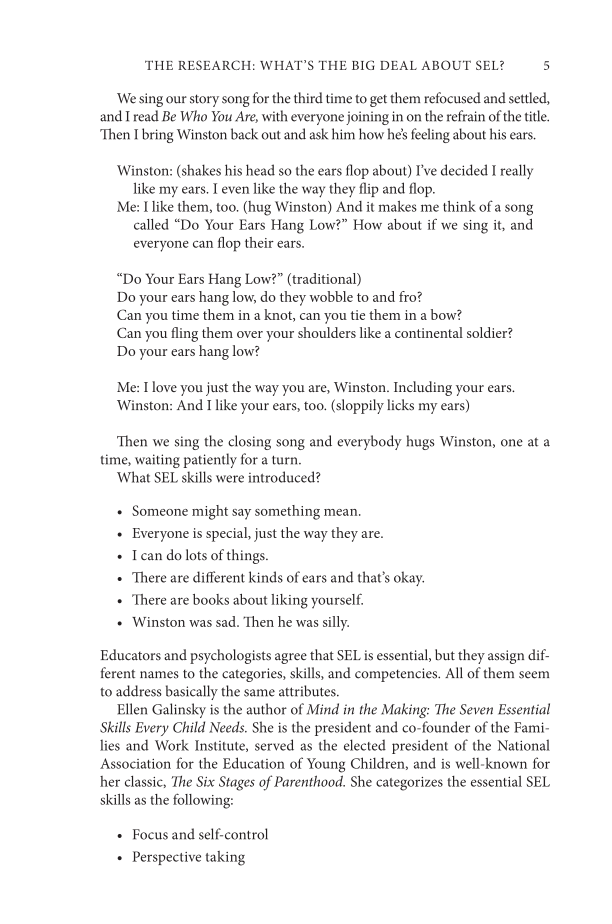THE RESEARCH: WHAT’S THE BIG DEAL ABOUT SEL? 5 We sing our story song for the third time to get them refocused and settled, and I read Be Who You Are, with everyone joining in on the refrain of the title. Then I bring Winston back out and ask him how he’s feeling about his ears. Winston: (shakes his head so the ears flop about) I’ve decided I really like my ears. I even like the way they flip and flop. Me: I like them, too. (hug Winston) And it makes me think of a song called “Do Your Ears Hang Low?” How about if we sing it, and everyone can flop their ears. “Do Your Ears Hang Low?” (traditional) Do your ears hang low, do they wobble to and fro? Can you time them in a knot, can you tie them in a bow? Can you fling them over your shoulders like a continental soldier? Do your ears hang low? Me: I love you just the way you are, Winston. Including your ears. Winston: And I like your ears, too. (sloppily licks my ears) Then we sing the closing song and everybody hugs Winston, one at a time, waiting patiently for a turn. What SEL skills were introduced? • Someone might say something mean. • Everyone is special, just the way they are. • I can do lots of things. • There are different kinds of ears and that’s okay. • There are books about liking yourself. • Winston was sad. Then he was silly. Educators and psychologists agree that SEL is essential, but they assign dif- ferent names to the categories, skills, and competencies. All of them seem to address basically the same attributes. Ellen Galinsky is the author of Mind in the Making: The Seven Essential Skills Every Child Needs. She is the president and co-founder of the Fami- lies and Work Institute, served as the elected president of the National Association for the Education of Young Children, and is well-known for her classic, The Six Stages of Parenthood. She categorizes the essential SEL skills as the following: • Focus and self-control • Perspective taking
Document Details My Account Print multiple pages
Print
You have printed 0 times in the last 24 hours.
Your print count will reset on at .
You may print 0 more time(s) before then.
You may print a maximum of 0 pages at a time.







































































































































































































































